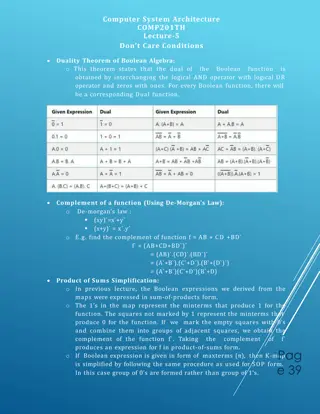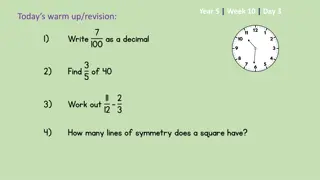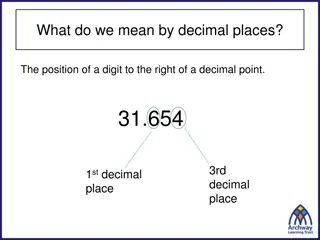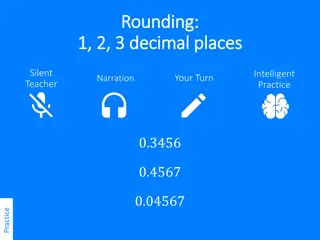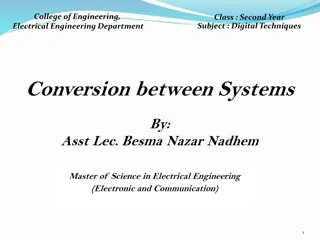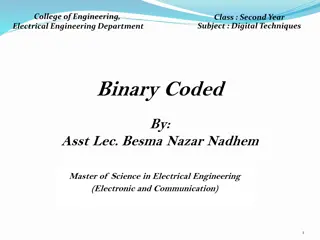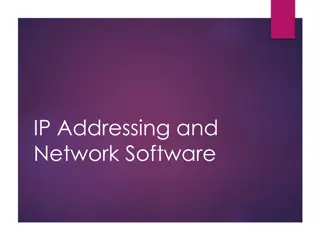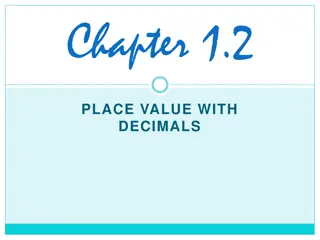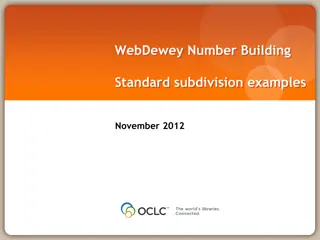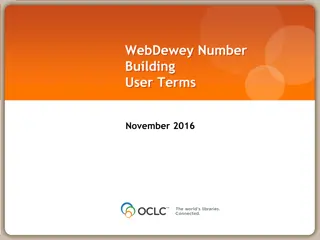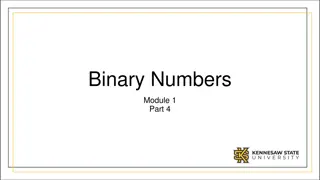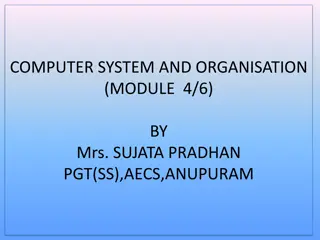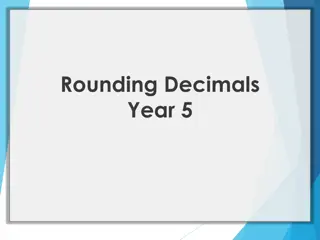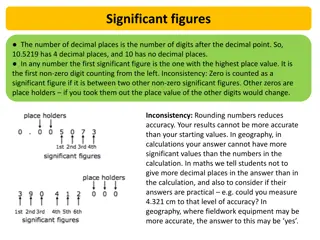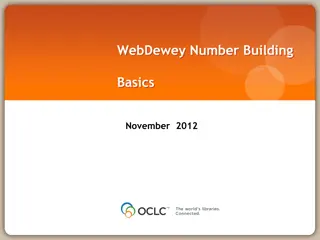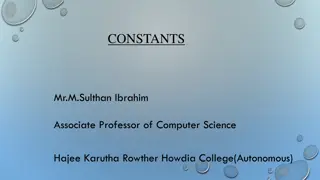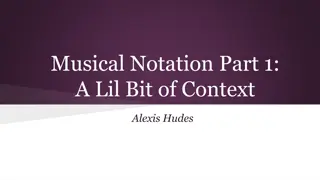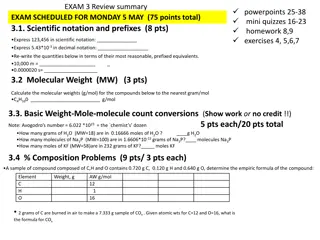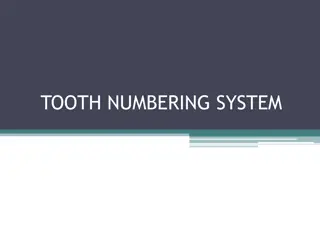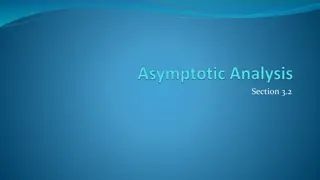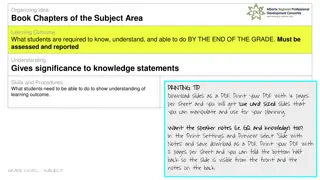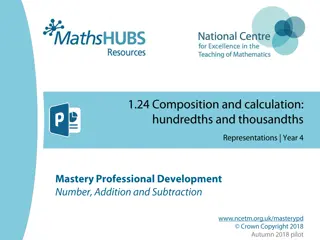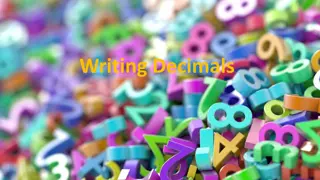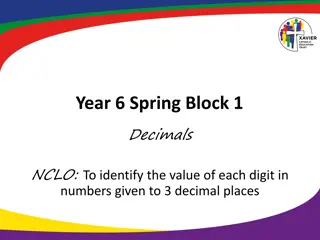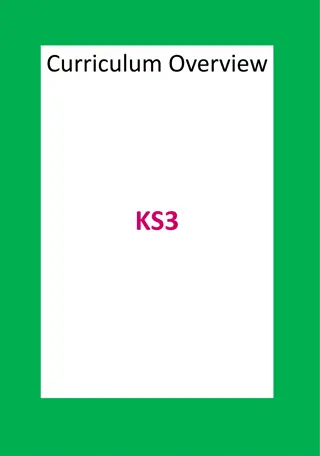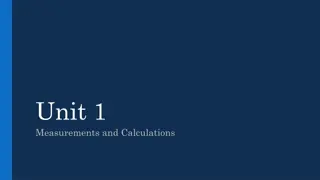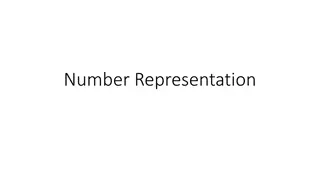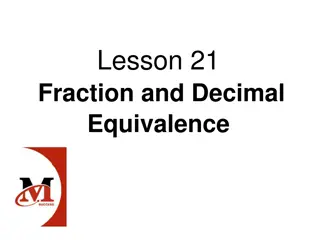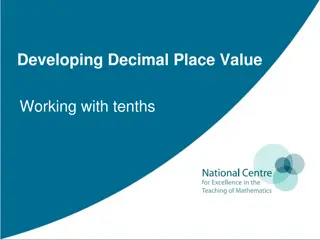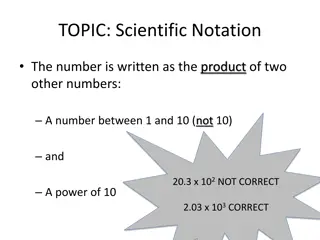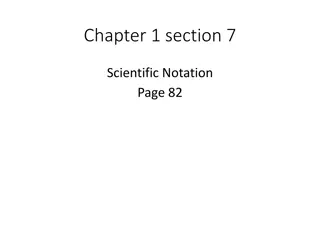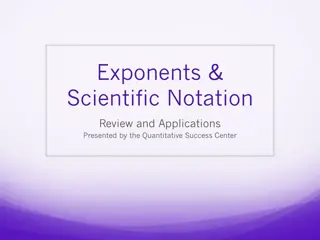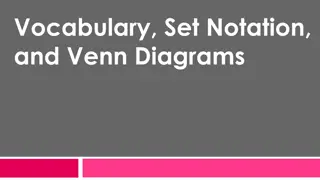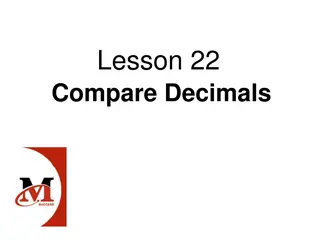Understanding Boolean Algebra: Duality Theorem, De-Morgan's Law, and Don't Care Conditions
Boolean algebra concepts such as the Duality Theorem, De-Morgan's Law, and Don't Care Conditions are essential for digital circuit design. The Duality Theorem states the relationship between a Boolean function and its dual function by interchanging AND with OR operators. De-Morgan's Law helps find t
0 views • 10 slides
Understanding Thousandths as Decimals: Exploring Decimal Place Values
Delve into the concept of understanding thousandths as decimals by exploring decimal place values through informative images and exercises. Learn to represent and write numbers with precision up to three decimal places, enhancing your math skills in a structured manner.
1 views • 21 slides
Understanding Decimal Places and Rounding
Decimal places refer to the position of a digit to the right of a decimal point. Rounding numbers to a specific decimal place involves looking at the digit immediately to the right of the desired decimal place and adjusting the number accordingly. This process helps simplify numbers for easier under
1 views • 14 slides
Mastering Decimal Rounding with Intelligent Practice
Enhance your rounding skills with this interactive guide on rounding decimal numbers to 1, 2, and 3 decimal places. Practice with silent teacher narration and work through examples to perfect your technique. Explore worked examples and test your understanding.
1 views • 4 slides
Understanding Binary Codes and Self-Complementing Codes
The concept of binary codes, including Binary Coded Decimal (BCD) codes, and self-complementing codes is explored in this informative content. Learn about how decimal numbers are represented in binary form, the structure of BCD codes, and the properties of self-complementing codes like 2421 and Exce
0 views • 34 slides
Digital Techniques for Number System Conversion in Electrical Engineering
Understand how to convert between binary, octal, decimal, and hexadecimal number systems with examples and explanations. Learn the processes of binary-to-decimal, octal-to-decimal, hexadecimal-to-decimal, decimal-to-binary, decimal-to-octal, and decimal-to-hexadecimal conversions. Gain insights into
0 views • 10 slides
Understanding Binary Coded Decimal (BCD) and Excess-3 Code
Binary Coded Decimal (BCD) is a binary code used to represent decimal numbers, with the popular 8421 BCD code and its conversion process explained. Additionally, Excess-3 Code, another BCD code, is detailed with an example of finding its code for a given decimal number. Different BCD codes like 4221
0 views • 11 slides
Understanding IP Addressing and Conversion from Binary to Decimal
Learn about IP addressing, including binary notation, dotted-decimal notation, and the process of converting binary numbers to decimal. Explore the unique features of IP addresses and the steps involved in converting binary to decimal systematically.
3 views • 47 slides
Understanding Floating Point Representation in Binary Systems
In computer systems, decimal numbers are represented in memory using scientific notation. This involves moving the decimal point and using mantissa and exponent to maintain precision and range. The transition to representing numbers in binary involves multiplying by 2 to the power instead of 10. Uti
2 views • 22 slides
Understanding Decimals: Place Value and Reading Practice
Learn about decimal place value, types of decimals, how to read decimals, understanding mixed decimals, and practicing decimal exercises, including writing decimals in words and identifying digits in place value charts.
1 views • 10 slides
Building Diverse Subjects in Dewey Decimal System
This guide provides a detailed process for adding new topics to the Dewey Decimal System, illustrated with examples such as high explosives, scuba diving, and public speaking for politicians. Users are guided on finding starting numbers, adding instructions, verifying correctness, and contributing t
1 views • 18 slides
User Term Editing Workflow for Dewey Decimal Classification System
Explore the process of editing user terms for Dewey Decimal Classification numbers, focusing on building and customizing entries to match specific patterns in the Relative Index for various topics. The workflow involves reviewing, editing, and updating user terms for different subject classification
0 views • 11 slides
Understanding Binary and Decimal Number Systems
This content explores the basics of binary and decimal number systems in a simple and engaging manner. It starts with decimal numbers, explaining how our numbering system works and progresses to binary numbers, which have only 2 digits (0 and 1). The significance of these systems in computing and ho
0 views • 27 slides
Understanding Number Systems and Conversions in Computer Systems
Explore the fundamentals of number systems in computer science, including decimal, binary, octal, and hexadecimal. Learn conversion methods between different bases and practical examples like converting decimal to binary. Dive into octal-binary conversions with solved problems. Enhance your knowledg
1 views • 16 slides
Park Mains High School Library Guide to Dewey Decimal Classification System
The Park Mains High School Library Guide provides an overview of the Dewey Decimal Classification System, making it easier for students to locate books based on subject matter rather than authors' last names. The system organizes books into categories such as Computer Science, Philosophy, Religion,
0 views • 16 slides
Decimal Rounding Exercises for Grade 5 Students
Practice rounding decimals with interactive exercises for 5th-grade students. Complete place value charts, round to the nearest whole number or tenth, and match decimals to their correct rounded values. Enhance your decimal skills with this engaging practice resource.
0 views • 18 slides
Understanding Significant Figures in Mathematics and Science
Significant figures play a crucial role in maintaining accuracy and precision in mathematical and scientific calculations. They help in determining the level of accuracy of measurements and calculations by focusing on the number of significant digits and decimal places. Rounding rules are essential
0 views • 6 slides
Dewey Decimal System Number Building Basics
This content provides a detailed guide on the process of creating new numbers in the Dewey Decimal Classification system. It covers steps such as finding starting numbers, adding instructions, verifying user terms, and contributing to Dewey editors. The examples and images included illustrate the st
0 views • 36 slides
Understanding Different Types of Constants in Programming
Constants in programming are fixed values that do not change during program execution. They include character, numerical, and string constants. Integer constants can be decimal, octal, or hexadecimal. This article explains each type of constant with examples of decimal, octal, and hexadecimal intege
0 views • 22 slides
Unlocking the Dewey Decimal Classification System
Explore the fascinating world of the Dewey Decimal Classification System created by Melvil Dewey. Discover the ten main classifications that categorize the vast realm of knowledge, from generalities to natural sciences. Learn how to identify books using Dewey Decimal call numbers and delve into vari
0 views • 19 slides
Evolution of Musical Notation Systems and Contexts
Explore the diverse world of musical notation systems, from Eastern to Western traditions, spanning Babylonian notations, Guido d'Arezzo's contributions, Gregorian chants, and modern-day tempo measures. Uncover the rich history and nuances of musical expression through various scales, staves, orname
0 views • 12 slides
Chemistry Exam Review: Topics in Scientific Notation, Molecular Weight, Stoichiometry, and Limiting Yield
Explore key concepts in chemistry, including scientific notation, molecular weight calculations, reaction balancing, stoichiometry, and limiting yield problems. Prepare for an upcoming exam by practicing various problems and conversions related to these topics, such as expressing numbers in scientif
0 views • 4 slides
Understanding Tooth Numbering Systems in Dentistry
Dental professionals use various tooth numbering systems to identify and record teeth in the mouth. The three main systems are Universal Notation, Zsigmondy/Palmer Notation, and Federation Dentaire Internationale (FDI). Universal Notation utilizes letters for primary teeth and numbers for permanent
0 views • 19 slides
Understanding Big-Oh Notation in Time Complexity Analysis
Big-Oh notation in algorithm analysis signifies how the runtime of an algorithm grows in relation to the input size. It abstractly characterizes the worst-case time complexity, disregarding constants and lower-order terms. The concept of Big-Oh, along with Big-Omega and Big-Theta, helps in comparing
0 views • 18 slides
Understanding Decimal Numbers and Operations in Mathematics
This educational material focuses on teaching students in a structured manner about decimal numbers and operations within the subject of mathematics. It covers essential topics such as place value, addition, subtraction, prime and composite numbers, and more. Students are required to grasp the signi
0 views • 18 slides
Understanding Decimal Place Value with Visual Representations
Explore visual representations of decimal place value, from one-hundredths to thousands, to deepen your understanding of this important concept. Through a series of images, grasp the relation between units and fractions, moving from larger to smaller denominations. Enhance your knowledge of decimal
0 views • 50 slides
Understanding Decimal Place Value through Visual Representation
Explore the concept of decimal place value with the help of interactive images showing numbers represented in a place value grid. Practice identifying numbers based on the value of tenths, hundredths, ones, and tens columns. Improve your understanding of decimals by visualizing and interpreting the
0 views • 16 slides
Understanding Decimals: Value Identification and Multiplication
This content focuses on identifying the value of each digit in numbers to 3 decimal places, understanding tenths and hundredths, using place value charts effectively, and multiplying numbers by 10, 100, and 1,000 in decimal form. It includes key vocabulary, questions, fluency exercises, and reasonin
0 views • 68 slides
Music Notation and Interpretation in KS3 Curriculum
Explore music notation in KS3 Music curriculum, focusing on reading and writing notes from E up to F on the treble clef. Understand various forms of notation such as graphic scores and enhance your musical literacy skills throughout the academic year.
0 views • 89 slides
Understanding Scientific Notation and SI Measurement Basics
Explore scientific notation as a method for expressing large and small numbers efficiently in mathematical calculations. Practice converting numbers into scientific notation and learn the rules for multiplication, division, addition, and subtraction in this format. Additionally, discover the benefit
0 views • 41 slides
Understanding Scientific Notation in Mathematics and Chemistry
Scientific notation is an essential concept for representing very large or very small numbers efficiently. It simplifies numbers by expressing them as a coefficient multiplied by a power of 10. This summary covers the basics of scientific notation, from converting numbers to and from scientific nota
0 views • 55 slides
Understanding Number Representation and Conversion
Learn how to convert between decimal and binary number representations. Discover the process from decimal to binary by dividing repeatedly by 2, and from binary to decimal by summing the powers of 2. Explore the simplicity of converting between base 16 and base 2, and practice binary addition with e
0 views • 27 slides
Understanding Fraction and Decimal Equivalence in Math
Discover how to express fractions with denominators of 10 as equivalent fractions with denominators of 100 in order to add them together. Learn to use decimal notation for fractions and explore essential questions on equivalent fractions, decimal conversion, and converting decimals to fractions. Eng
0 views • 58 slides
Understanding Decimal Place Value with Tenths
This lesson focuses on developing a deep understanding of decimal place value specifically working with tenths. Key points include recognizing and using the unit '0.1,' understanding the role of the decimal point, visualizing quantities as decimals, and transitioning from additive to multiplicative
0 views • 38 slides
Understanding Exponents: Simplifying Expressions and Scientific Notation
Explore the concept of exponents, learn how to simplify expressions with negative exponents, and delve into scientific notation for efficiently representing large numbers. Discover the basics of exponents, operations involving exponents, and the application of scientific notation in various discipli
0 views • 8 slides
Understanding Scientific Notation: Converting, Multiplying, Dividing & More
Scientific notation is a way to express large or small numbers efficiently. Learn how to convert numbers to and from scientific notation, multiply and divide in scientific notation, and ensure proper formatting. Understand the rules for exponents and make calculations easier with these simple steps.
0 views • 8 slides
Understanding Scientific Notation and Conversions
Scientific notation is a useful way to express very large or very small numbers in a concise form. This chapter discusses how to convert numbers between scientific notation and decimal notation, providing examples and explanations for better understanding.
0 views • 18 slides
Understanding Exponents and Scientific Notation
Exponents are powers to which bases are raised, allowing for efficient representation and calculation of numbers. This review covers the basics of exponents, rules, laws, and practical applications. Scientific notation offers a method to express very large or small numbers using powers of 10. Learn
0 views • 13 slides
Understanding Set Notation and Probability in Visuals
Explore the concepts of vocabulary, set notation, Venn diagrams, probability, experiments, outcomes, sample space, events, unions, intersections, complements, and set notation through visual aids and clear explanations. Learn about subsets, empty sets, and more in this comprehensive resource from Wa
0 views • 24 slides
Comparing Decimals with Examples and Practice Activities
Explore how to compare decimal numbers to the hundredths place using reasoning and visual representations. Practice identifying the larger decimal, understanding the importance of decimal places, and using symbols for comparison. Enhance your skills in comparing decimals through real-world scenarios
0 views • 32 slides
